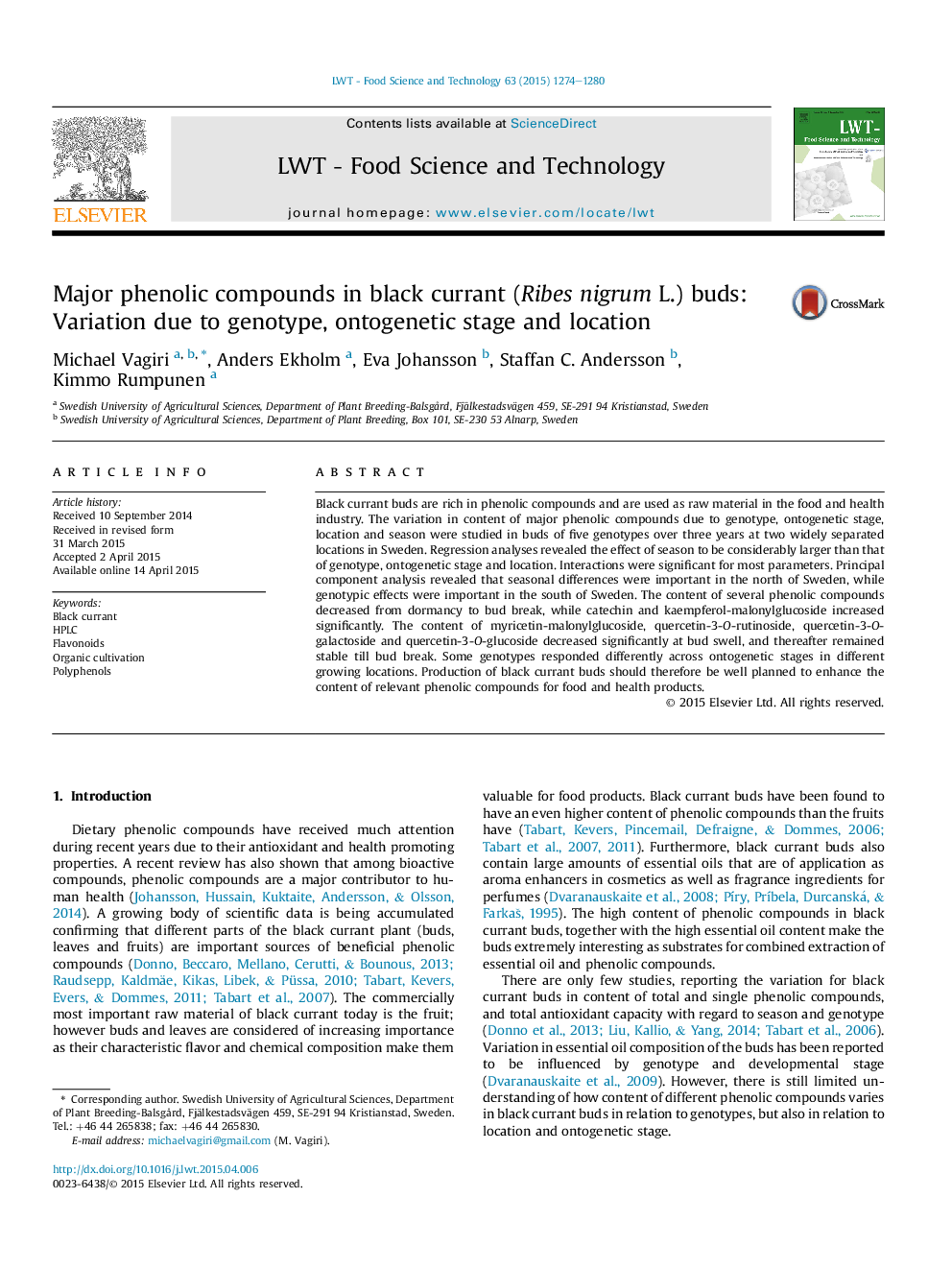| Article ID | Journal | Published Year | Pages | File Type |
|---|---|---|---|---|
| 6400548 | LWT - Food Science and Technology | 2015 | 7 Pages |
â¢Effects of genotype, ontogenetic stage, location and season were studied.â¢Phenolic compounds in buds were influenced more by the season.â¢Genotypic differences were observed.â¢Content of several phenolic compounds decreased from dormancy to bud break.â¢Content of several the phenolic compounds was higher in buds from north.
Black currant buds are rich in phenolic compounds and are used as raw material in the food and health industry. The variation in content of major phenolic compounds due to genotype, ontogenetic stage, location and season were studied in buds of five genotypes over three years at two widely separated locations in Sweden. Regression analyses revealed the effect of season to be considerably larger than that of genotype, ontogenetic stage and location. Interactions were significant for most parameters. Principal component analysis revealed that seasonal differences were important in the north of Sweden, while genotypic effects were important in the south of Sweden. The content of several phenolic compounds decreased from dormancy to bud break, while catechin and kaempferol-malonylglucoside increased significantly. The content of myricetin-malonylglucoside, quercetin-3-O-rutinoside, quercetin-3-O-galactoside and quercetin-3-O-glucoside decreased significantly at bud swell, and thereafter remained stable till bud break. Some genotypes responded differently across ontogenetic stages in different growing locations. Production of black currant buds should therefore be well planned to enhance the content of relevant phenolic compounds for food and health products.
